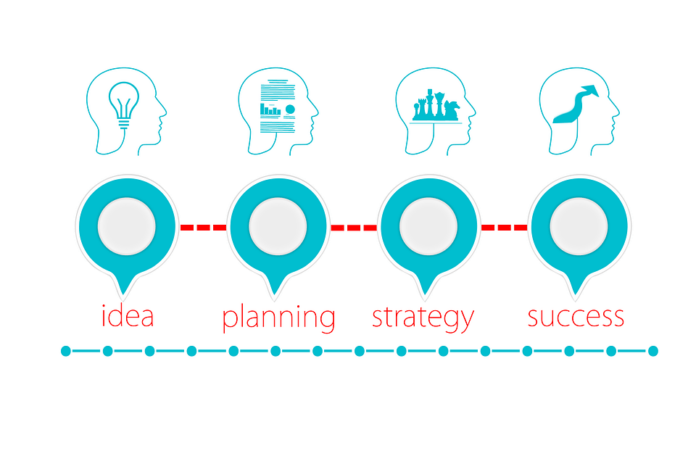
In today’s world, the digital landscape is rapidly evolving. Moreover, businesses are looking for the latest technologies to improve their operations. API development is one of the most effective ways to enhance businesses. However, it can also be a challenging task to develop API for a business.
In this article, we will highlight all the necessary details to develop API for your business. If you are a beginner or a new developer, this guide will also be helpful for you. However, you must know the fact that developing an API is a complex and time-taking process. Read this article till the end to gain information on developing an API in simple steps.
What Is an API and Why Should You Develop One?
API stands for Application Programming Interface. It is a set of tools, routines, and protocols to build a software application. It helps us simplify the process in which software components interact with each other. As a result, it gives us a standardized way to exchange data between different applications. Here are the reasons why developing an API is necessary:
- It helps different software to communicate and share their functionalities.
- APIs can help businesses to automate their tasks. Hence, it saves time by reducing manual labour.
- It enhances security by providing a standardized way to access control and manage authentication.
- APIs can help businesses monetize their functionality and data and generate higher revenues.
- We can also earn through APIs by developing one and adding it to an API marketplace. One such example is the APILayer marketplace. It connects the Free API sellers with the developers. Hence, making the APIs discoverable for us.
What Are the Types of APIs?
Here are some most common types of APIs available in the market today.
REST
- REST (Representational State Transfer)
- Based on HTTP protocols and standard HTTP methods (GET, POST, DELETE, PUT)
- Scalable, Flexible, and Easy to Use.
SOAP
- SOAP (Simple Object Access Protocol)
- It uses XML to transfer data.
- Robustness
- High-Security features
GraphQL
- It helps developers to send and receive only a specific type of data.
- Mostly used for complex data queries.
- Higher flexibility and efficiency.
RCP APIs
- RPC (Remote Procedure Call)
- Mostly used in distributed computing environments.
WebSocket APIs
- It allows real-time communication between servers and clients.
- Mostly used in the chat application, online gaming, and stock market tracking.
Open APIs
- These APIs are also known as Swaggers
- They can help us document REST APIs
Apart from the types mentioned above, there are many other types as well. For example, there are also private and public APIs.
How Do APIs Work?
As mentioned earlier, APIs use a set of protocols, rules, and routines to communicate between two software. The APIs work by sharing the functionalities between the two platforms. It can help us drive innovation, integrate existing systems, and build new applications.
Developers need to send requests through an API to receive the data in the form of a response. Let’s take an example request of an API from the APILayer marketplace. Here is a request by Number Verification API:
| var myHeaders = new Headers(); myHeaders.append(“apikey”, “{API-KEY}”);var requestOptions = { method: ‘GET’, redirect: ‘follow’, headers: myHeaders }; fetch(“https://api.apilayer.com/number_verification/countries”, requestOptions) |
|---|
It gives us the following response in return:
| { “AD”: { “country_name”: “Andorra”, “dialling_code”: “+376” }, “AE”: { “country_name”: “United Arab Emirates”, “dialling_code”: “+971” }, “AF”: { “country_name”: “Afghanistan”, “dialling_code”: “+93” }, “AG”: { “country_name”: “Antigua”, “dialling_code”: “+1” }, “AI”: { “country_name”: “Anguilla”, “dialling_code”: “+1” } } |
|---|
What Are Important Terminologies in API Development?
Before developing an API, it is important to learn about a few important terminologies. Let’s take a look at them.
API Key
An API key helps us authenticate the API requests. Moreover, it can help us monitor the usage of our APIs. As a result, we can ensure that only authenticated users are using our API.
End Point
An API endpoint helps us access a particular functionality of our API.
JSON
It is a data exchange format that helps us transmit data between applications.
OAuth
It is a standard protocol to help us share our data with third-party applications without sharing login credentials.
POST
It can help us transmit our data to a server. Moreover, it can also help us update existing resources or create new ones.
GET
This HTTP method helps us get the data from the server. Note that it reads only the existing data.
SOAP
It can help exchange structured data between our web servers. SOAP is a messaging protocol.
Latency
It refers to the time taken when an API request is sent and the response is received. Low latency is important to enhance the user experience.
API Throttling
It refers to limiting the number of requests being made during a particular time duration.
Rate Limiting
It is a technique to limit the number of requests for a particular user.
How to Develop APIs?
Here are some steps to develop an API:
Consider Development Planning & Costs
First, you must plan your development by considering a few important factors. For example, you must identify the problems your API will solve.
Then, you must define your API requirements to design the API. For this purpose, you need to create a specification document. It will include information such as features, costs, and many other things. It is important to note that you must be able to achieve your targeted API within available costs.
Choosing the Right Programming Language
It is important to choose the right language by considering multiple factors. For example, you must consider your project requirements, team skills, and level of performance. It can help you choose the right language without any confusion.

Developing API Endpoints
You must define the input and output of your API endpoints. It can help users to access the functionality of your APIs.
Testing the API
It is important to test your PI before launching it to the market. You can perform the following testing techniques:
- Unit Testing
- Integration Testing
- Load Testing
- Security Testing
Documentation
You must create extensive documentation for your app store API. It can help developers to integrate and understand the API when using it. You must include code snippets, examples, and picture outputs of how your API endpoints work.
Note that you must also know to manage your API. It can help you handle errors and monitor your API effectively. Moreover, you must also ensure features like rate limiting, encryption, authorization, and authentication. It can help you secure your API.
Conclusion
API development is a complex process that requires careful planning, development, and testing. By following the steps outlined in this guide, you can create a high-quality API that meets the needs of your users and supports your business goals.
Whether you’re building a web or mobile application, integrating systems, or sharing data with partners, APIs can help you streamline your operations and drive innovation. With the right approach and tools, API development can be a powerful tool for unlocking new opportunities and delivering value to your users.
You can also take help from the APILayer marketplace when finding the right API. They also give a live demo for their users to understand their APIs in a much better way.

FAQs
What Are the 4 Types of API?
- Open APIs
- Partner APIs
- Internal APIs
- Composite APIs
What Is an Example API for Development?
There are many example APIs but a few examples are:
- Twitter API
- Google Maps API
- GitHub API
Which Language Is Used for API Development?
We can use any language that can interface with SOAP. However, JavaScript is the most commonly used language.
Is API Coding Hard?
API coding may seem complicated but we can do it easily by putting in a little more effort and following the above steps.










